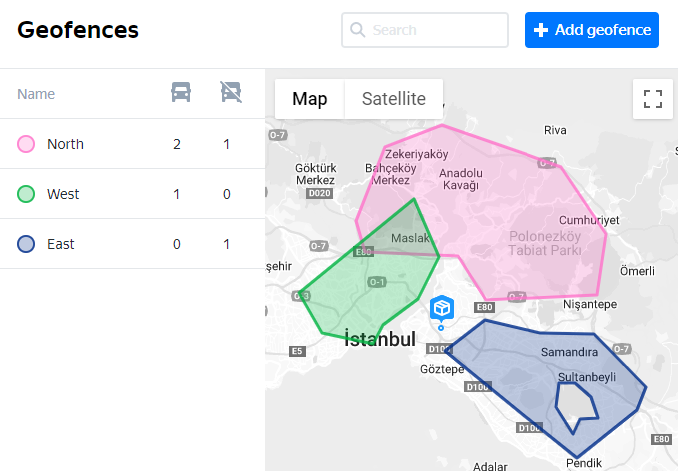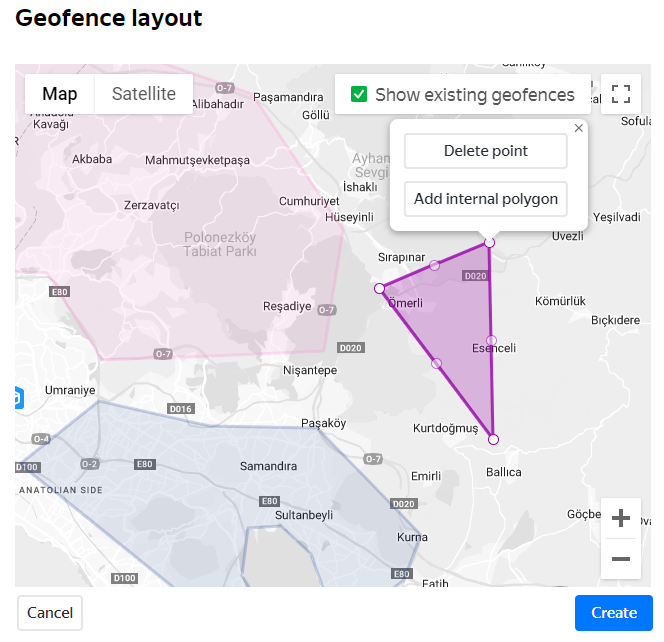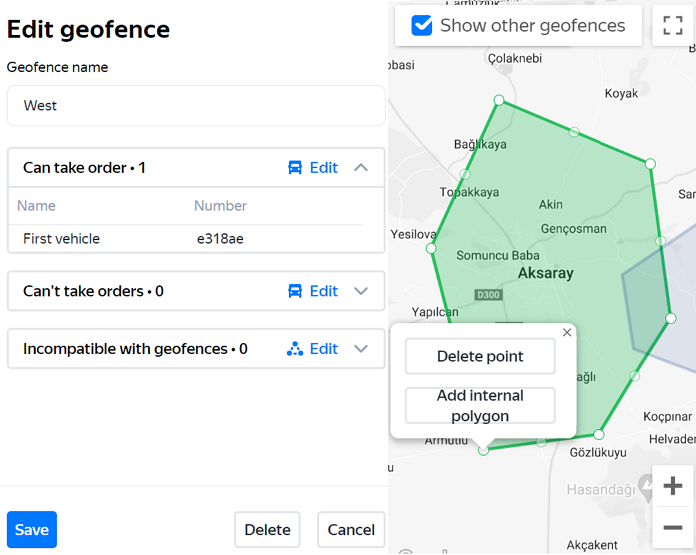Working with geofence data
What are geofences?
A geofence is an area bounded by coordinates.
Geofences can overlap, have internal empty zones, and be nested.
Orders are automatically placed in a geofence if their coordinates are located in the geofence area. If the order falls in a location where geofences overlap, then the optimal solution is chosen automatically when planning.
A vehicle can be assigned to specific geofences. In this case, the vehicle can't be assigned orders from other geofences. If there are no geofences set for the vehicle, then the vehicle can be assigned orders that don't fall in any geofence.
The geofence list is created for each company.

Why use geofences?
Delivery quality improves as couriers work with regular customers in geofences assigned to them.
You can use geofences to set payment rates for couriers. For example, orders within the city should be distributed to your own couriers and orders outside the city to third-party couriers, or vice versa.
You can prohibit the use of vehicles with certain dimensions or without special passes in the city center (the presence of a pass is marked with a tag) .
Geofences allow you to minimize delivery time disruptions by taking into account the road characteristics. For example, you can exclude roads of poor quality from geofences or build geofences on different sides of a river or a railway.
You can use incompatible zones to distribute couriers to destinations based on the tariff rates. This is important for large manufacturers and transport companies.
Adding a geofence
- In , click Add geofence.
- In the window that opens, enter the geofence name and click Next.
- Choose the desired map scale.
- To define the geofence polygon, left-click on it. Use the points to build a polygon.
- Clicking on the point again opens a drop-down menu with the ability to edit and add an internal polygon.
- To view previously created zones on the map, choose Show existing geofences in the upper-right corner.
- When the geofence outline is ready, click Create.

Editing and deleting geofences
To edit a geofence, click its name. In Edit geofence mode, you can:
Change the geofence name.
- Specify which vehicles can and can't take orders from this geofence.
- Specify incompatible geofences.
Change the geofence boundaries. Drag the points with the mouse and remove extra points using the drop-down menu.
Create an internal polygon. Click one of the boundary points and choose Add internal polygon from the drop-down menu.
Delete a geofence. Click Delete and confirm the deletion in the window that opens.
Geofence names must be unique. If you try to create a geofence with a name that already exists in the list, you will see a warning.
